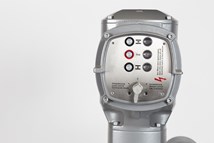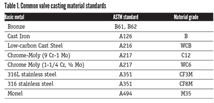Cameron’s Flow Control Division Ships 2,500th Subsea Choke
Cameron’s Flow Control division (FLC) celebrated a milestone in June of this year when it shipped its 2,500th subsea choke out of its state-of-the-art Subsea Center of Excellence in Longford, Ireland.
From its first subsea choke supplied back in 1975, Flow Control has become a premier global subsea choke supplier in the oil and gas industry. This position is maintained by an active Research and Development (R&D) vision, combined with New Product Development (NPD) strategies focused on meeting the ever evolving and demanding requirements of subsea production. With non-retrievable and insert-retrievable 10 and 15ksi rated subsea chokes in nominal sizes up to 8 inch as well as the 20k subsea choke technology, which is currently in development, Cameron’s Flow Control division covers market requirements worldwide.
Flow Control launched the new CC80SR, an 8-inch nominal insert retrievable production choke with a 1,000 CV capacity, during Offshore Europe 2011 in Aberdeen. This choke was developed and qualified for large bore gas projects in Australia and elsewhere. Flow Control’s subsea product’s goal is simple: “To continually develop new products and technologies to meet the challenging demands of the oil and gas sector.”
With its active R&D commitment and NPD strategies, Cameron’s Flow Control division will continue to provide innovative solutions to the subsea choke market for future subsea oil and gas discoveries.
For more information, contact Thomas Erwin: thomas.erwin@c-a-m.com
RELATED CONTENT
-
Valve Basics: Electric Actuator Controls
Electric valve actuators control the opening and closing of valves. With a motor drive that provides torque to operate the valve, these actuators are frequently used on multi-turn valves such as gate or globe and also on ball, plug and other quarter-turn valves.
-
The Rationale Behind Valve Characteristics
Back in the “early days,” we were taught that, to properly control flow, we should select a linear valve characteristic when the valve controls more than 25% of the piping system pressure drop at full flow.
-
Effective Check Valve Selection and Placement for Industrial Piping Systems
When planning a check valve installation, the primary goal is to achieve a valve and piping system that offers the longest service life at the lowest cost.







 Unloading large gate valve.jpg;maxWidth=214)


